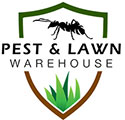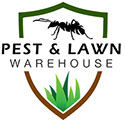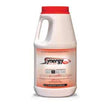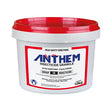SOLVING DRAIN PEST ISSUES
StopOderz probiotic drain foam – The solution to control cockroaches and drain fly in commercial kitchens
Inspect: Prior to treating for cockroaches and drain flies, a thorough inspection should be completed to identify breeding sites. There are many potential areas that serve as breeding sites for flies and cockroaches. Sewers, septic tanks and grease traps provide the right conditions for insects to harbour. Removing the breeding site is the most important part of a drain fly and cockroach control program.
Clean: Regularly clean any floor drains. Use StopOderz Probiotic drain products are designed to eat the organic matter where the flies and cockroaches breed.
Treat: Drain flies& Cockroaches
There are a number of solutions you can employ to eliminate drain flies and cockroaches and reduce drain attraction as a harbourage for pests.
- Exterior Treatments.Proactive perimeter pest control is necessary, including habitat reduction around the outside perimeter, a barrier spray on the foundation and around entry points, and application of a band of moisture-resistant granular bait applied outside the spray barrier. Always read the label to determine what products can be used and where.
- Drain Cleaning. Maintaining drain cleanliness through using probiotic foam cleaners can provide continued pest suppression through removing the conditions conducive to insect breeding.
- Drain Treatments.Some pesticides can be used in and around drains, but many cannot, so read labels before applying. If there is any movement in the drain, especially if water is flowing, be careful about chemical use; ensure that you don’t contaminate groundwater or areas where water drains out (such as into an open stream).
- Drain Traps. Traps in drain lines need to be installed and working properly to help prevent roaches from entering drains and coming into the facility through the sewer or outdoor water treatment facilities. The water trap seal valve sits in the drain, letting water flow out, but not allowing insects to move up into the facility. The traps also can eliminate gasses and odours that can come up through drains and attract insects.
- Interior treatments. Cockroaches can harbor in tight spaces under and behind equipment, in stainless steel table legs, behind and under cracked tile, and in wall voids that are accessible through plumbing and utility penetrations. Inspect these areas for cockroaches by using a flushing aerosol. Once harbourages are identified a non-repellent targeted aerosol spray (Such as ClearOut Crawling Insect Aerosol) by treating cracks and crevices. In addition, use a Cockroach bait to clean up the remaining cockroaches and ensure cockroach baits are rotated to avoid bait resistance is minimised.
APPLICATION:
Pour sufficent warm/hot water into the drain. (Used to activate the bacterial spores. Apply at least 1L for small drains)
Direct application into drains quickly and easily by inserting the nozzle tip directly into drains. Inject the foam for a few short seconds or until the foam reaches the drain level.
It can also be used in rubbish bins and septic tanks to liquefy organic waste and noticeably reduces the smell of garbage.
Leave the drains overnight.
How does StopOderz Drain Foam work?
The mechanism by which StopOderz drain foam controls microorganisms is by changing from a spore state to a vegetative bacterial state when environmental conditions are favourable and then outcompeting all other bacteria for present nutrients required for their survival thus starving them to death.
The premium, naturally occurring bacterial spores sense waste around them and are activated within 20 minutes of contacting organic debris (its food source), and double every 20 minutes after that as long as food and moisture is available to them. The bacteria release different enzymes automatically to attack the different types of waste. The bacterial spores produce their own enzymes, so the bacteria
release more enzymes than a customer could ever afford to purchase when compared to an enzyme product.
Once the organic matter has been removed, the bacterial spores return to a dormant state and are actived again when food and moisture is available to them.



















 Chat with Us
Chat with Us
